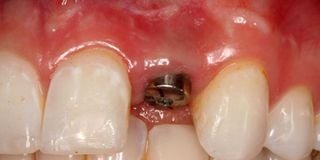The difference between dental implants and bridges

Dental implants and bridges are the most common types of permanent artificial teeth given to people. One important thing to note, however, is that while bridges can be fixed by a general dentist, implants are better given by an orthodontist (a dentist who specialises in providing prosthetic treatment).
Dental implants
These are anchors that permanently hold replacement teeth, and are usually made in different types. The most common implants are made of mental screws and are surgically placed into the jaw bones. Because bones generally heal slowly, a person who has been fitted with implants may have to wait up to three months or beyond before they recover fully.
If you intend to have a dental implant, it is important to first discuss it with your dentist who will advise on what to expect. Note that implants are expensive.
Dental bridge
This is also a fixed dental restoration that can be used to replace missing teeth. It is done by permanently joining an artificial tooth to the adjacent teeth. Dental bridges can also be fixed to implants if they are adjacent to the restorative area. Though bridges are made using an indirect method of restoration (by technical help of dental laboratory technologists), they can also be fabricated directly in the mouth using high level technology and use of materials such ceramic composite resin.
Dentist advice
A dentist can provide a detailed explanation to a patient before treatment is administered because a bridge is fabricated by reducing the size of the teeth on either side where one is missing.
This means that the connecting element of the teeth is reduced in size to accommodate the necessary material to be used to restore the size and shape to its original appearance. This is done to maintain the correct teeth alignment and proper contact with the opposing teeth.
Although this type of treatment is not painful, in cases where sensitivity is high (though in rare occasions), a dentist may prefer to do a root canal treatment on that particular tooth before treatment is given.
The writer is a dentist
[email protected]




